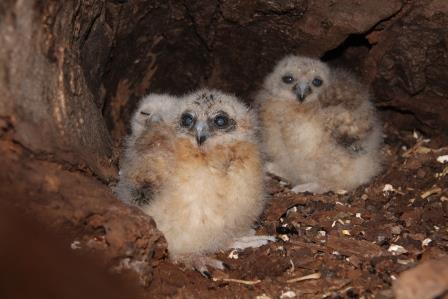An ongoing study at ECU has detected widespread and sometimes fatal rodenticide exposure in Southern Boobooks in WA including some parts of the Perth Hills.
Anticoagulant rodenticides are mouse and rat poisons which work as blood thinners. Some of the newer “second generation” anticoagulant rodenticides take a long time to break down and can end up poisoning pets and wildlife which eat poisoned rodents. Worldwide, owls, eagles, hawks, foxes and even bobcats and mountain lions have been killed by rodenticides which have accumulated in their prey. An ongoing study at ECU has detected widespread and sometimes fatal rodenticide exposure in Southern Boobooks in WA including some parts of the Perth Hills. More research is needed to understand what other species might be affected here in the Perth Hills but, in the meantime, there are a number of things you can do at home to help reduce the risk to wildlife.
Other Alternatives
One of the most effective ways of getting rid of unwanted rat and mice around your house is simply cleaning up a bit. Removing rubbish from your yard, keeping pet food indoors, picking up fallen fruits beneath your fruit trees, and using chicken feeders which prevent spillage removes potential rat and mouse food from the environment around your house. These easy first steps can make a huge difference in the number of introduced rodents around your property. Cleaning up brush piles and sealing holes in your walls and roof reduces the amount of rodent habitat and helps keep them out of your home. Replacing palms with native trees can be a big help too. It not only removes one of the favourite hideouts for black rats (Rattus rattus), but also provides better habitat for the native predators like owls and hawks which help control rodents. If rodents are still a problem, old-fashioned snap traps baited with peanut butter are also very effective if placed along edges of walls and corners where rodents usually travel.
Read the Label to Save Lives
If you do decide to use rodenticides, it is important to know which ones you are using. Warfarin and coumatetralyl are “first generation” anticoagulant rodenticides which break down much faster and are less likely to cause poisoning in native wildlife like hawks and owls which eat poisoned rats. Avoid products containing brodifacoum, bromadialone and difethialone, which are long-lasting second generation products and are much more likely to unintentionally poison wildlife as they move up the food chain. Most rat and mouse poison packaging doesn’t make it obvious which rodenticides are used in the product. The actual rodenticide contained in the baits will be listed after the words “Active Constituent.” If you do choose to use rodenticide, be sure to follow the directions on the label to help reduce the risk of unintentionally poisoning wildlife.

Photo: Simon Cherriman
